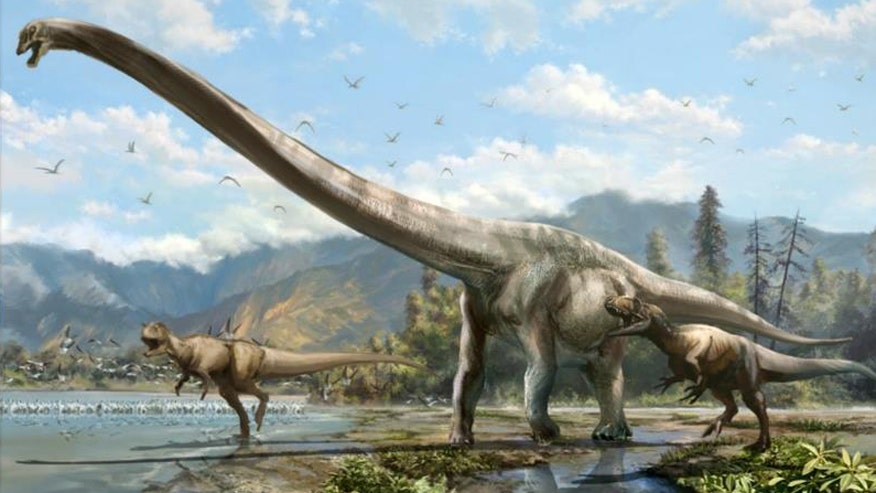New species of long-necked ‘dragon’ dinosaur discovered in China

A new species of long-necked dinosaur was discovered by Canadian paleontologists from bones discovered in central China, according to the "Journal of Vertebrate Paleontology." Dubbed the Qijianglong (“dragon of Quijang”), the sauropod has a neck that measures 25 feet long, virtually half of its body length. “As far as I know, there are no more bones in the field of this dinosaur,” said team leader Phillip Currie of the University of Alberta.
Discovered by construction workers at a site near Quijang City in 2006, the dinosaur is about 50 feet long and thrived in the late Jurassic period. Researchers digging at the site found its head and neck still together - a rare occurrence due to the small cranium often detaching easily after the creature’s death. Though the researchers had the bones cast and even went as far as mounting the cast skeleton in a museum, they had no idea that they’d uncovered a new species. “It had already been collected, prepared and was laid out on tables,” Currie told FoxNews.com. “This region of China has lots of dinosaur fossils, including skeletons, bonebeds and footprints. The preservation is quite nice, and we were asked to help describe it.”
The Qijianglong is a mamenchisaurid that lived in China 160 million years ago. While most suaropod necks only make up a third of their body length, mamenchisaur necks can reach up to half, with the largest known specimen’s collar extending 59 feet. However, unlike other mamenchisaurids, the Qijianglong’s neck vertebrae is filled with air, making it a much lighter load to carry. Its interlocking joints showed that the creature moved its neck with more ease horizontally rather than sideways, enabling it to eat from extremely tall trees in movements similar to a construction crane’s. The giant herbivores were also mostly immune to attacks from carnivorous dinosaurs due to their size - though that’s not to say they were completely invincible. “I suspect that once they were mature, they were probably immune to the attacks of predators the way elephants are today,” Currie says. “However, like elephants (which are hunted in some parts of Africa by large prides of lions), they were probably never completely immune to attack. And as juveniles, there is some evidence to suggest that the adults stayed with and protected them.”
While long-necked dinosaurs did thrive in other parts of the world, mamenchisaurids were indigenous to China for reasons still unknown. According to Currie, “Mamenchisaur sauropods are so far only known from China, but they do have close relatives all over the world. I assume that mamenchisaurs evolved in that part of the world, but were unable to spread to other continents because China was rather isolated at that time.” Some researchers believe that mamenchisaurs were unable to migrate due to the sea barrier, and lost in competition when invading species arrived once the land connection was restored.
Currie and his team named it the “dragon of Quijang” due to its similarity to the mythical long-necked Chinese dragon. In a statement, doctoral student and team member Tetsuto Miyashita revealed, "I wonder if the ancient Chinese stumbled upon a skeleton of a long-necked dinosaur like Qijianglong and pictured that mythical creature." He might not be far off: in 300 BC, the historian Chang Qu documented discovering “dragon bones” in Sichuan, which Quijang is a province of.
|





